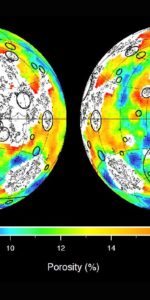
In the search for life elsewhere, the Earth is typically used as a standard against which other planets, or moons, are compared. Since our planet is teeming with seemingly countless life forms, it must represent the near-perfect, most ideal conditions for life to flourish, right? It would seem so, but new research is suggesting that may not be the case, that there may be other exoplanets in other solar systems which are even better suited for life than Earth is.
The new study, from astronomers and geologists at Ohio State University, is examining stars that are similar to our sun in size, age, and composition. The preliminary results so far suggest that any terrestrial-type, rocky planets orbiting them may often be up to about 25% warmer in their interiors than Earth. Seven out of eight of these stars studied to date contain much more of the radioactive element thorium than our sun, and so any rocky planets orbiting them probably do as well, making them warmer on the inside. Warmer interiors could allow plate tectonics to last longer on those planets, which helps liquid water to remain on the surface.
Thorium, as well as other radioactive elements such as uranium and potassium, are found within Earth’s mantle as well. This could mean that at least some of these planets are more geologically active than Earth and more likely to be able to sustain liquid water. That’s good news, certainly at least for life “as we know it.”
This warming effect also influences a star’s overall habitable zone. According to team member Cayman Unterborn, “If it turns out that these planets are warmer than we previously thought, then we can effectively increase the size of the habitable zone around these stars by pushing the habitable zone farther from the host star, and consider more of those planets hospitable to microbial life.”

He continues, “At this point, all we can say for sure is that there is some natural variation in the amount of radioactive elements inside stars like ours. With only nine samples including the sun, we can’t say much about the full extent of that variation throughout the galaxy. But from what we know about planet formation, we do know that the planets around those stars probably exhibit the same variation, which has implications for the possibility of life.”
Earth is constantly active geologically, but we already know of other places in our own solar system which are more active in some ways. Jupiter’s moon Io, for example, is more volcanically active than Earth, even though it is much smaller and is way out in the outer solar system. Saturn’s moon Enceladus is also highly active, with its many water vapour geysers blasting out from the south polar region, and it’s even farther from the sun than Io.
With thousands of exoplanets now being discovered, including ones that are smaller and rocky like Earth, the data is encouraging for the prospects of finding extraterrestrial life. On Earth, there are some bacteria which never see sunlight, but depend solely on the heat emanating from deeper down in Earth’s interior—an analogue for some types of alien microorganisms?
The new findings were presented this week at the American Geophysical Union meeting in San Francisco.





One Comment
One Ping
Pingback:Some exoplanets may be even more habitable than Earth |